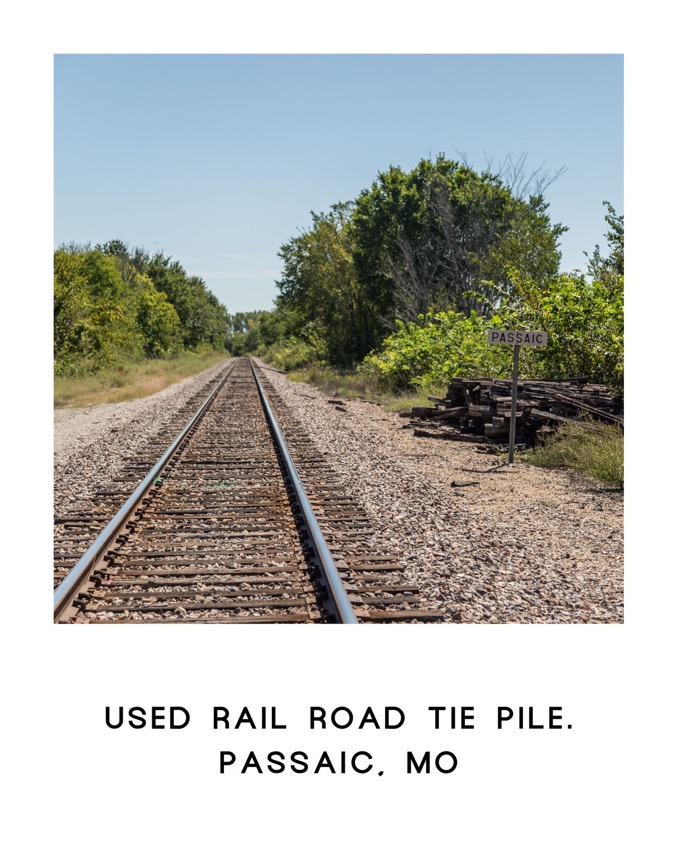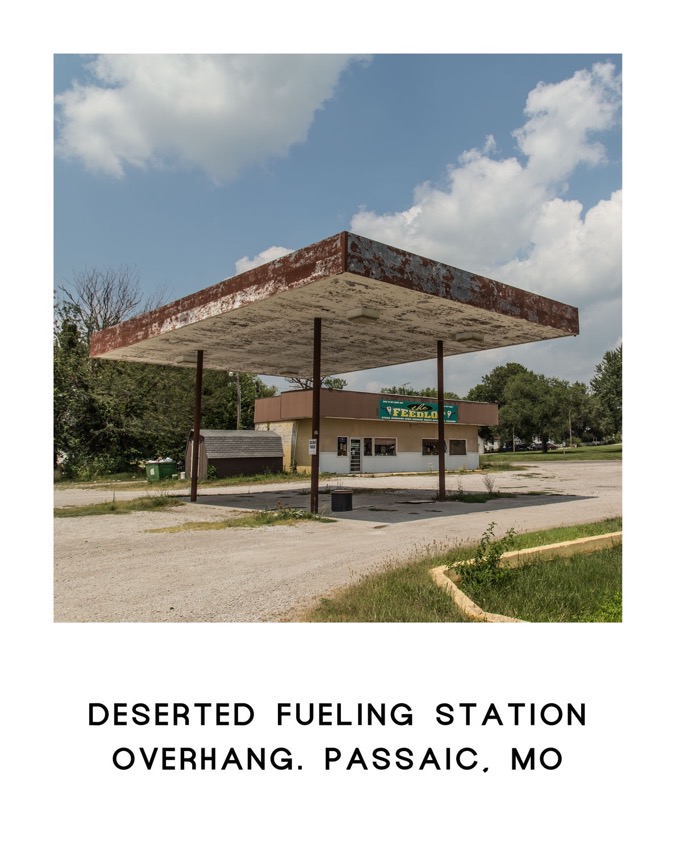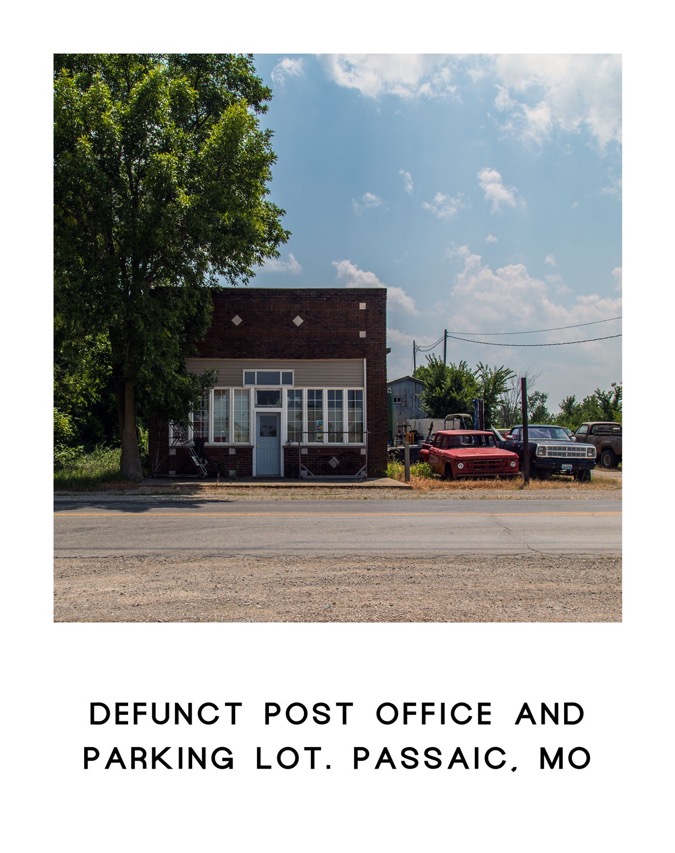arcadia (monuments of Passaic, MO)
In his 1967 essay A Tour of the Monuments of Passaic, New Jersey, Robert Smithson reframed the mundane as monumental, positioning shifting landscapes and decaying infrastructure as markers of time's relentless flow. Inspired by Smithson's perspective, this project turns its gaze toward Passaic, Missouri—a small, unassuming town near my hometown of Butler, MO. Here, the monuments are not of industry, but of absence.
Passaic, MO, like many rural communities, carries the weight of diminished significance. Its scattered plots and empty lots suggest past vitality. The echoes of grain elevators, a storefront, a community center, are now spectral coordinates in a landscape of erasure. Through photographic documentation, mapping, and reflective narrative, this project captures the tension between presence and loss, permanence and impermanence.
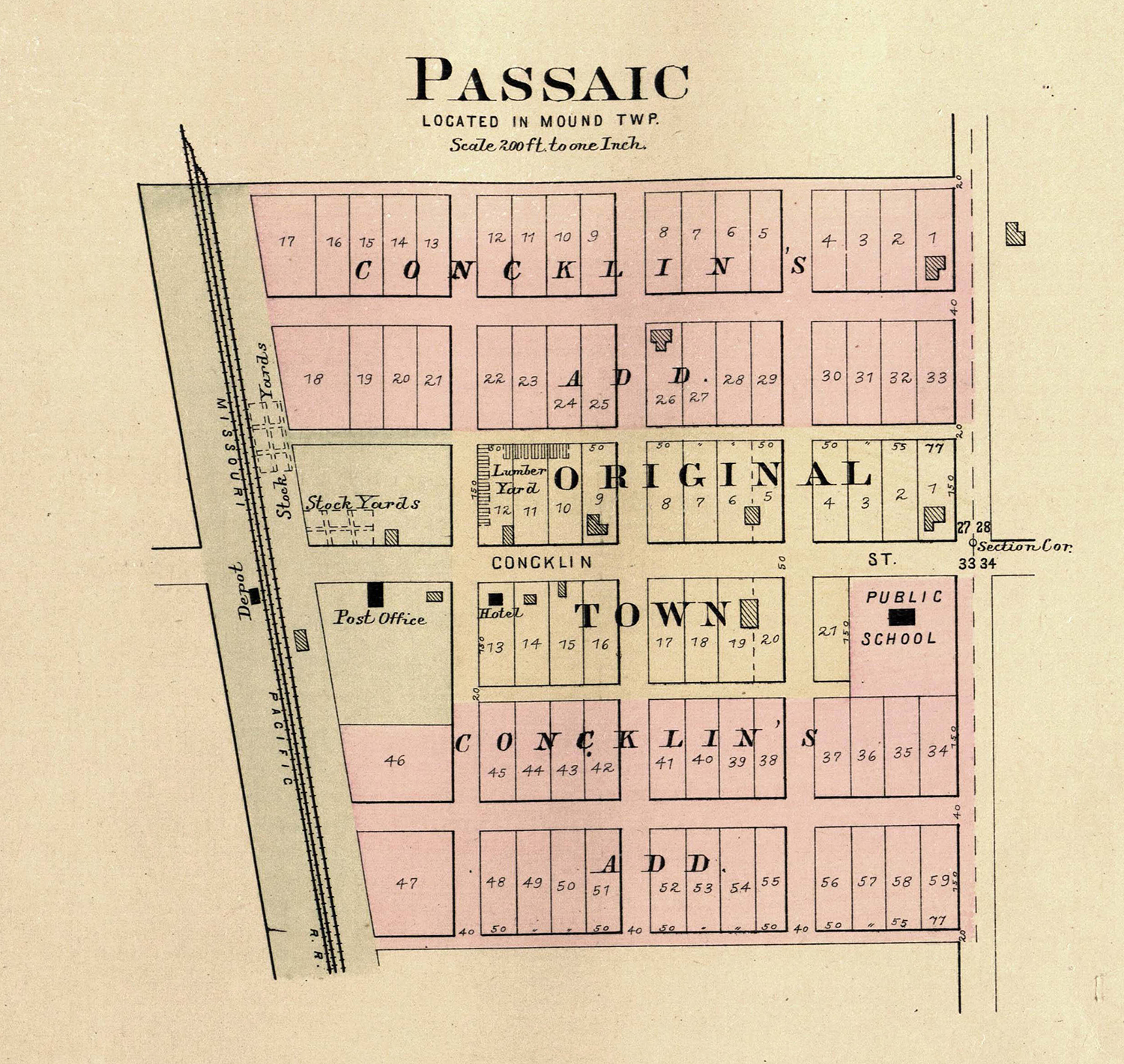
Passaic, MO: A town on the Missouri Pacific Railroad, laid out by Charles S. Conklin on July 14, 1891; named for the town of the same name in New Jersey.
The town's post office, established in 1891, remained in operation until 1983. Like many towns shaped by the rhythms of the railroad, Passaic experienced a gradual decline as transportation routes shifted and industries evolved.
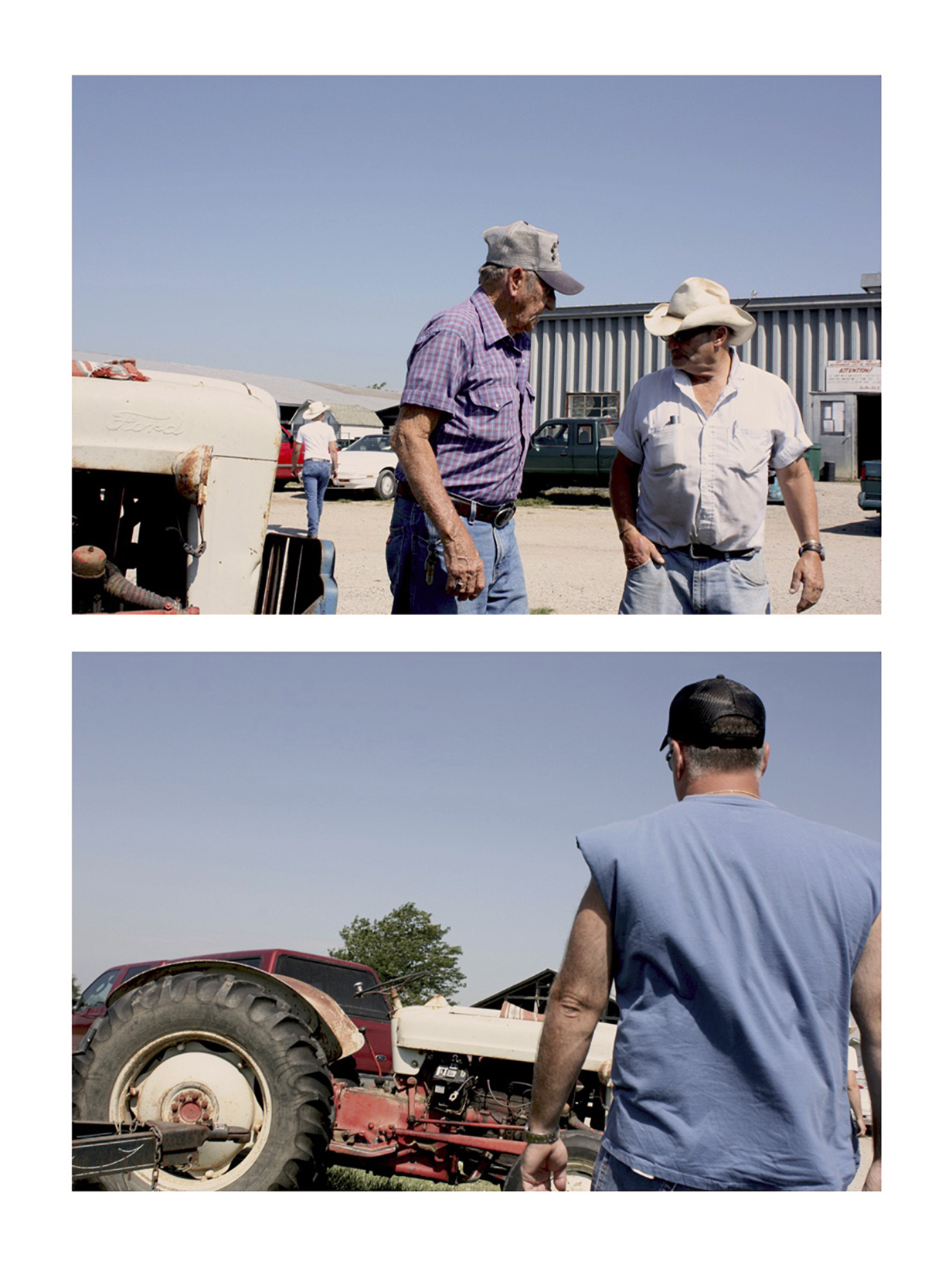
The work invites viewers to consider the landscapes of their own memory. What remains when structures fall and purpose dissolves? How do we reconcile the persistent imprint of human intention with the slow reclamation of land by time and nature?
Passaic, MO, becomes more than a place; it is a case study in the cyclical nature of development and decay, a rural parallel to Smithson's suburban observations. For both, monuments need not be grand to be significant.
This project, A Tour of the Monuments of Passaic, MO, reimagines the familiar and forgotten as markers of historical and cultural resonance. It is an invitation to view the ordinary with new eyes—to see the monuments hidden in plain sight.
